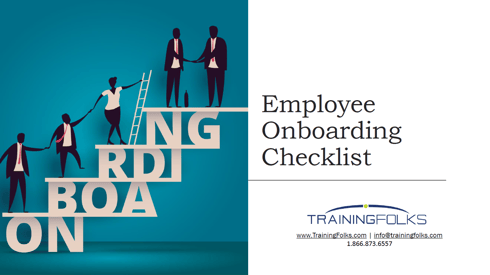The Impact of Bad Employee Onboarding 
Employee onboarding is the process of integrating a new employee into an organization. This involves teaching new employees about the company's history, culture, values, and goals. It also provides new employees with training, tools and resources to succeed in their roles.
In today’s job market, it is increasingly difficult for employers to find and retain talent. This is why it’s so important to provide an engaging, comprehensive and supportive onboarding program that reduces turnover. This will not only keep your employees happier, but also help your company boost productivity, save money, and potentially decrease turnover.
To understand the impacts of bad onboarding programs, let’s first look at what an effective onboarding program entails.
Onboarding should not be confused with orientation, which is typically an event that covers the basics of company policies and procedures. Employee Onboarding is a more comprehensive process that spans several weeks or months. The goal of onboarding is to help new hires feel comfortable in their new environment, new position and to allow them to hit the ground running from day one.
What does an effective onboarding program look like?
The first step in creating a successful employee onboarding program is to clearly define the program’s goals and objectives. What do you want your new employees to know about the company? What skills and values do you want them to develop? What benchmarks or goals should the new hire be achieving in their first days, weeks, or months?
An effective onboarding process also uses an onboarding team equipped with the resources and training to support new employees. These teams should have enough resources to keep the onboarding process efficient.
When creating an onboarding program, here are a few things to consider:
- Company and role expectations - Clearly define what your company’s values, culture, and goals are and use the onboarding program to give new hires a deeper understanding of your company. This will help them feel more like part of the team and guide their decisions. You should also provide role-specific expectations, including any benchmarks you’ve set.
- Training - New employees should receive comprehensive training on your company’s products, services, and processes. They should also be given ample opportunity to practice these skills before being asked to use them in their everyday work tasks.
- Support - An effective employee onboarding program should offer new employees a support system. This could include a mentor program, an employee resource group, or regular check-ins from their managers. New employees should feel integrated with the team and know that they have someone to ask for help.
- Ongoing evaluation and feedback - Throughout the onboarding process, you should evaluate your new employee’s performance and help them understand what they’re doing well and where they need improvement.
How does bad onboarding affect your company?
Now that you know what an effective onboarding program looks like, you probably have an idea of what a bad one is: undefined company goals and role expectations, lack of feedback, weak training, and inadequate ongoing support.
Bad employee onboarding has several negative impacts on your business.
- High turnover rates
New employees who experience a negative employee onboarding are more likely to become disengaged and dissatisfied with their jobs. A recent Human Resource study found that 69% of employees who went through an effective onboarding program were still with the company after three years, while only 49% were retained without the program. Turnover costs are high—from one-third to one-half of an employee’s annual salary. Investing in an effective employee onboarding program will help minimize these costs in the long run. High turnover can also impact morale within your workforce, leading to even more turnover.
- Productivity losses
Employees who are not sufficiently onboarded may have difficulty understanding their duties and how to perform effectively. This can cause lower productivity in the workforce and affect business goals at a higher level. According to a study by the Society for Human Resource Management, it takes an average of eight months for a new hire to become fully productive. By providing employees with the resources they need from the beginning, you can shorten that timeline significantly.
- Reputation damage
We know that insufficient onboarding leads to higher employee dissatisfaction and turnover. When employees leave, they could spread negative information about the company, often using public channels like social media. This can not only make it harder to fill the positions, but also impact sales and even cause PR issues.


